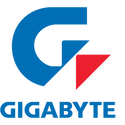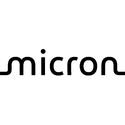
Intel Ends Network Switch Business and RISC-V Pathfinder Program Amidst Economic Slowdown
Yesterday, Intel reported that the company experienced one of the most challenging quarters and year overall revenue results, which led the company's share price to plummet and erase almost 10 billion dollars from its market cap. Amid the economic downtrend, the company is preparing to axe unnecessary developments and research costs that it would get in low-margin markets. Today, this has been reflected in the company's network switch business and the RISC-V pathfinder program. In 2019, the company acquired Barefoot Networks, which ended up in a line of Tofino series of standalone network switches. Apparently, this has been a low-margin or unprofitable business for Intel. "NEX continues to do well and is a core part of our strategic transformation, but we will end future investments in our network switching product line, while still fully supporting existing products and customers," noted Intel CEO Pat Gelsinger, adding, "Since my return, we have exited seven businesses, providing in excess of $1.5 billion in savings". Intel NICs are not affected, and the company's investments in other networking businesses continue.
Additionally, the company is also doing a shutdown of its RISC-V Pathfinder program. Thanks to Yusuke Ohara, who questioned Intel's Pathfinder for RISC-V program support, we have information that the company is discontinuing the program "effective immediately." The support also advises that Intel will not provide additional advancements or bug fixes, so everyone should consult 3rd parties for any software and development.
Additionally, the company is also doing a shutdown of its RISC-V Pathfinder program. Thanks to Yusuke Ohara, who questioned Intel's Pathfinder for RISC-V program support, we have information that the company is discontinuing the program "effective immediately." The support also advises that Intel will not provide additional advancements or bug fixes, so everyone should consult 3rd parties for any software and development.



































